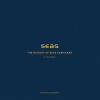Markedness
Markedness refers to the tendency of languages to show a preference for particular structures or sounds. This bias towards ‘marked’ elements is consistent within and across languages, and tells us a great deal about what languages can and cannot do. This pioneering study presents a groundbreaking theory of markedness in phonology. De Lacy argues that markedness is part of our linguistic competence, and is determined by three conflicting mechanisms in the brain: (a) pressure to preserve marked sounds (‘preservation’), (b) pressure to turn marked sounds into unmarked sounds (‘reduction’), and (c) a mechanism allowing the distinction between marked and unmarked sounds to be collapsed (‘conflation’). He shows that due to these mechanisms, markedness occurs only when preservation is irrelevant. Drawing on examples of phenomena such as epenthesis, neutralization, assimilation, vowel reduction and sonority-driven stress, Markedness offers an important new insight into this essential concept in the understanding of human language.
• Presents a new and groundbreaking theory of markedness • Deals with a very wide range of phonological phenomena • Uncovers some important problems with current, long-standing beliefs about markedness
Contents1. What is markedness?; 2. Theory; 3. Markedness reduction; 4. Preservation of the marked; 5. Conflation in reduction; 6. Markedness conflation in preservation; 7. Markedness conflict: vowels; 8. Prediction and alternatives; 9. Conclusions.
- Forlag: Cambridge University Press
- Utgivelsesår: 2006
- Kategori: Språk
- Lagerstatus: Ikke på lagerVarsle meg når denne kommer på lager
- Antall sider: 466
- ISBN: 9780521839624
- Innbinding: Innbundet











